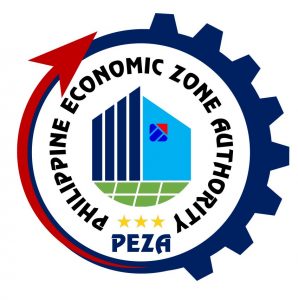 THE Fiscal Incentives Review Board (FIRB) said the Philippine Economic Zone Authority (PEZA) has inadequately accounted for the investments brought in by its locators and cannot provide complete data on some companies’ operations.
THE Fiscal Incentives Review Board (FIRB) said the Philippine Economic Zone Authority (PEZA) has inadequately accounted for the investments brought in by its locators and cannot provide complete data on some companies’ operations.
In a statement on Wednesday, the Department of Finance (DoF) said that PEZA submitted incomplete information regarding some of its locators’ investment levels and markets served, after being asked to produce such data.
Finance Secretary Carlos G. Dominguez III chairs the FIRB.
In a statement, PEZA said its deadline to submit its reports to the FIRB has not yet lapsed.
The FIRB was seeking the information to monitor the locators’ compliance with the Corporate Recovery and Tax Incentives for Enterprises (CREATE) law, in order to determine their eligibility for incentives like tax holidays and a special corporate income tax.
“PEZA did not give us the data on the actual investment. They said they are not monitoring that,” Finance Assistant Secretary and FIRB Secretariat Head Juvy C. Danofrata was quoted as saying in her report during a recent DoF meeting.
Asked to comment, PEZA Director General Charito B. Plaza said in a statement that the report issued by the FIRB was “erroneous and misleading” and designed to “embarrass PEZA as an Investment Promotion Agency (IPA).”
“PEZA is confident that benefits of incentives to investments outweigh the foregone taxes,” she added.
On the specific matter of incomplete data, PEZA said the “accepted practice” for IPAs before Republic Act No. 11534 or the CREATE Act took effect was to submit monthly reports on approved foreign investments to the Department of Trade and Industry. Similar reports were filed on a quarterly basis to the Philippine Statistics Authority (PSA).
“This is the accepted practice for all IPAs including PEZA, to monitor the committed investments of our enterprises. The PSA posts on its website quarterly reports on approved foreign investments based on the consolidated submission of the IPAs. When the CREATE Act took effect in April 2021, the FIRB (was) included in the monthly submission of our reports.”
“The requirement to monitor the approved and actual amount of investments of the (registered business enterprises) is a report imposed only under the CREATE Act under Section 205 with the filing of the annual benefits report. Most of our RBEs submitted these reports to the FIRB on June 15, while PEZA has until July 15 to submit our reports to the FIRB.”
Of the 196 businesses registered with PEZA, reports on 12 contained no information regarding the levels of capital invested, while another 11 contained no information about the markets they served, the DoF said.
The DoF said that as of April 30, only four investment promotion agencies were able to fully comply with the requirements — the Bases Conversion and Development Authority, the John Hay Management Corp., the Poro Point Management Corp., and the PHIVIDEC Industrial Authority.
“These reports are important to enable the FIRB to fulfill its monitoring and oversight function over the IPAs and the overall administration and grant of tax incentives,” Ms. Danofrata said.
She added that these reports are also shared with other government agencies, especially the Bureau of Internal Revenue, for monitoring and audit purposes. She also said that the FIRB Secretariat had sent follow-up letters to IPAs that have incomplete and missing submissions.
The FIRB found that the 136 companies registered with the Board of Investments invested capital of P43.12 billion, with 127 serving the domestic market and the remaining nine export-oriented.
The other IPAs are the Authority of the Freeport Area of Bataan, Aurora Economic Zone and Freeport Authority, Cagayan Economic Zone Authority, Clark Development Corp., Regional Board of Investments-Bangsamoro Autonomous Region in Muslim Mindanao, Subic Bay Metropolitan Authority, Tourism Infrastructure and Enterprise Zone Authority, and Zamboanga City Special Economic Zone Authority.
All IPAs, including PEZA, registered 348 companies as of the end of April, of which 237 serve the domestic market while 100 are exporters.
“The real estate, services, and manufacturing sectors are the industries with the highest number of registered firms. Of the 348 firms, 25 have no information on their industry classification,” Ms. Danofrata said. — Tobias Jared Tomas
